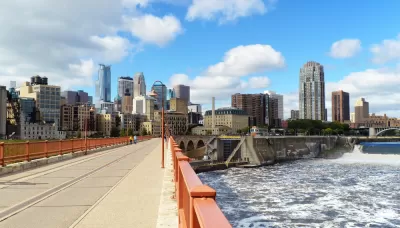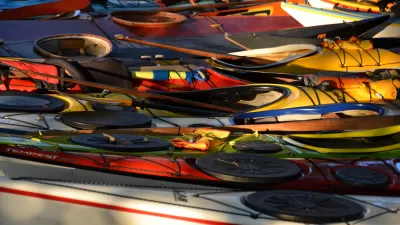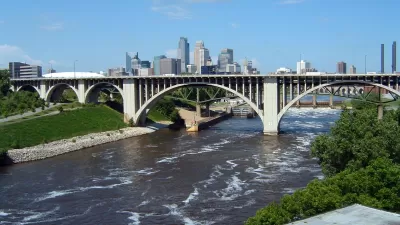Details of a proposal to create a national park at one of the Twin Cities' region most popular destinations: the lock and dam at the Upper St. Anthony Falls, on the Mississippi River where it flows through Minneapolis.

Peter Callaghan reports on a unique idea from the Twin Cities: a national park in Downtown Minneapolis.
"The dream centers on one of the most-visited pieces of land in the region, around the lock and dam at the Upper St. Anthony Falls that sits below the Stone Arch Bridge. And the idea is to create a park experience to tell the story of the Native Americans who preceded the region's white settlers as well as the industries that tapped the power of the river to build the city," according to Callaghan.
Callaghan begins the article by noting the challenges and long timeline facing the idea, but also that a coalition of local interests is working hard to bring it to fruition. John Anfinson, the superintendent of the Mississippi National River & Recreation Area, is quoted in the article saying, "[f]ew places on the entire Mississippi can match its national and international significance…"
Meanwhile, the lock sits mostly dormant, after a 2014 decision by Congress to close the lock to watercraft navigation "as a way to halt the progress of invasive carp." Also, the U.S. Army Corps of Engineers is currently seeking funding for a "disposition study" to explore the question of whether the federal government should still own and operate the lock. Finally, one of the largest adversaries to the park proposal is a license held by Minneapolis-based Crown Hydro to build a small hydroelectric project at the lock. Representatives of the company are quoted in the article, however, claiming that a hydroelectric problem shouldn't be an obstacle to the park proposal.

Alabama: Trump Terminates Settlements for Black Communities Harmed By Raw Sewage
Trump deemed the landmark civil rights agreement “illegal DEI and environmental justice policy.”

Planetizen Federal Action Tracker
A weekly monitor of how Trump’s orders and actions are impacting planners and planning in America.

Why Should We Subsidize Public Transportation?
Many public transit agencies face financial stress due to rising costs, declining fare revenue, and declining subsidies. Transit advocates must provide a strong business case for increasing public transit funding.

Understanding Road Diets
An explainer from Momentum highlights the advantages of reducing vehicle lanes in favor of more bike, transit, and pedestrian infrastructure.

New California Law Regulates Warehouse Pollution
A new law tightens building and emissions regulations for large distribution warehouses to mitigate air pollution and traffic in surrounding communities.

Phoenix Announces Opening Date for Light Rail Extension
The South Central extension will connect South Phoenix to downtown and other major hubs starting on June 7.
Urban Design for Planners 1: Software Tools
This six-course series explores essential urban design concepts using open source software and equips planners with the tools they need to participate fully in the urban design process.
Planning for Universal Design
Learn the tools for implementing Universal Design in planning regulations.
Caltrans
Smith Gee Studio
Institute for Housing and Urban Development Studies (IHS)
City of Grandview
Harvard GSD Executive Education
Toledo-Lucas County Plan Commissions
Salt Lake City
NYU Wagner Graduate School of Public Service




























